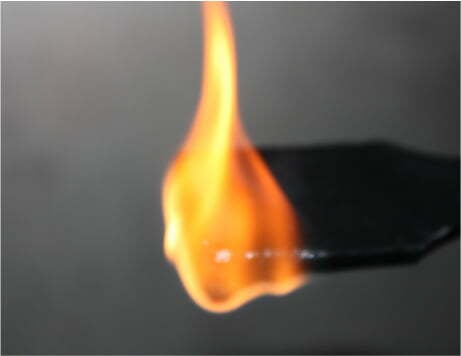How to make plastics flame-retardant

AIMPLAS generates new knowledge and technologies that can be transferred to companies in order to help them to increase their effectiveness and competitiveness. AIMPLAS has turned its attention toward the development of new technologies for flame retardants in plastic and can offer the following expertise:
Bio-based and sustainable flame retardants
The attention to bio-based resources is constantly increasing in all the aspects of plastics application
AIMPLAS has extensive experience in the use of bio-based polymers, for example, polylactic acid, and it’s actually focused on the development of flame retardants based on natural matrices such as starch, chitosan and gelatine. Recently, AIMPLAS has focused its attention on the research of natural resources such as lignin, phosphorous derivatives and biobased flame retardants.
Moreover, the synthesis department of AIMPLAS has experience and capacity for the scale up production of the derived additives that can be applied in coatings, curing and extrusion processes to produce coated, composites or blended polymers with enhanced flame retardance properties.
The department is working in national and European projects aimed to exploit biobased resources or industrial wastes. As an example, the project BIOFUEGO is focused on the development of close to 100% natural based flame retardants and their application in the coating, curing and extrusion processes.

Direct synthesis of chemical additives and building blocks
Dispersion of additives in polymer matrices is a common technique to achieve specific properties in plastic final products. On the other hand, copolymerization is another technique to add specific properties by the addition of new building blocks, as co-monomers, in the polymerization process.
The synthesis department has strong expertise in the functionalization of substrates both in organic and inorganic chemistry. The department has the knowledge to fully develop, characterize and scale up the production of chemicals compounds to be used as direct additives in polymers matrices or co-monomers in copolymerization processes.
AIMPLAS has been involved in several projects for the synthesis of products with high added value. The project FLASH is actually in development for the production of ABS polymers with enhanced flame retardancy properties by the application of functionalized co-monomers and use of new additives with flame retardancy properties.
Nanoparticles modification and encapsulation to achieve flame-retardant properties and enhanced polymer compatibility
The synthesis department of AIMPLAS has participated in different projects related to the encapsulation of agent with different purposes such as antitumoral, antimicrobial, insect repellents and flame retardants by inclusion or vehiculation processes.
Organic modification of nanoparticles allows to increase the distance between the inorganic structure and to lead to a compound more compatible with the polymeric matrix, thus promoting the diffusion of the additive in the mixing process. Moreover, in this way, the thermostability of the encapsulated compound is increased and its interaction with the polymer is enhanced.
Polymer chain modification
AIMPLAS, strong of its 28 years in the sector, is experienced in the modification of polymeric matrices, in order to improve the mechanical, chemical and fireproof performances of the final product. In order to achieve the modifications, depending on the matrix and on the final target characteristics required, different techniques have been used, such as direct functionalization or reactive extrusion (REX). The department has worked in different projects aimed for the industries involved in packaging, medicine, transport etc.
Lodovico Agostinis | AIMPLAS Synthesis department

